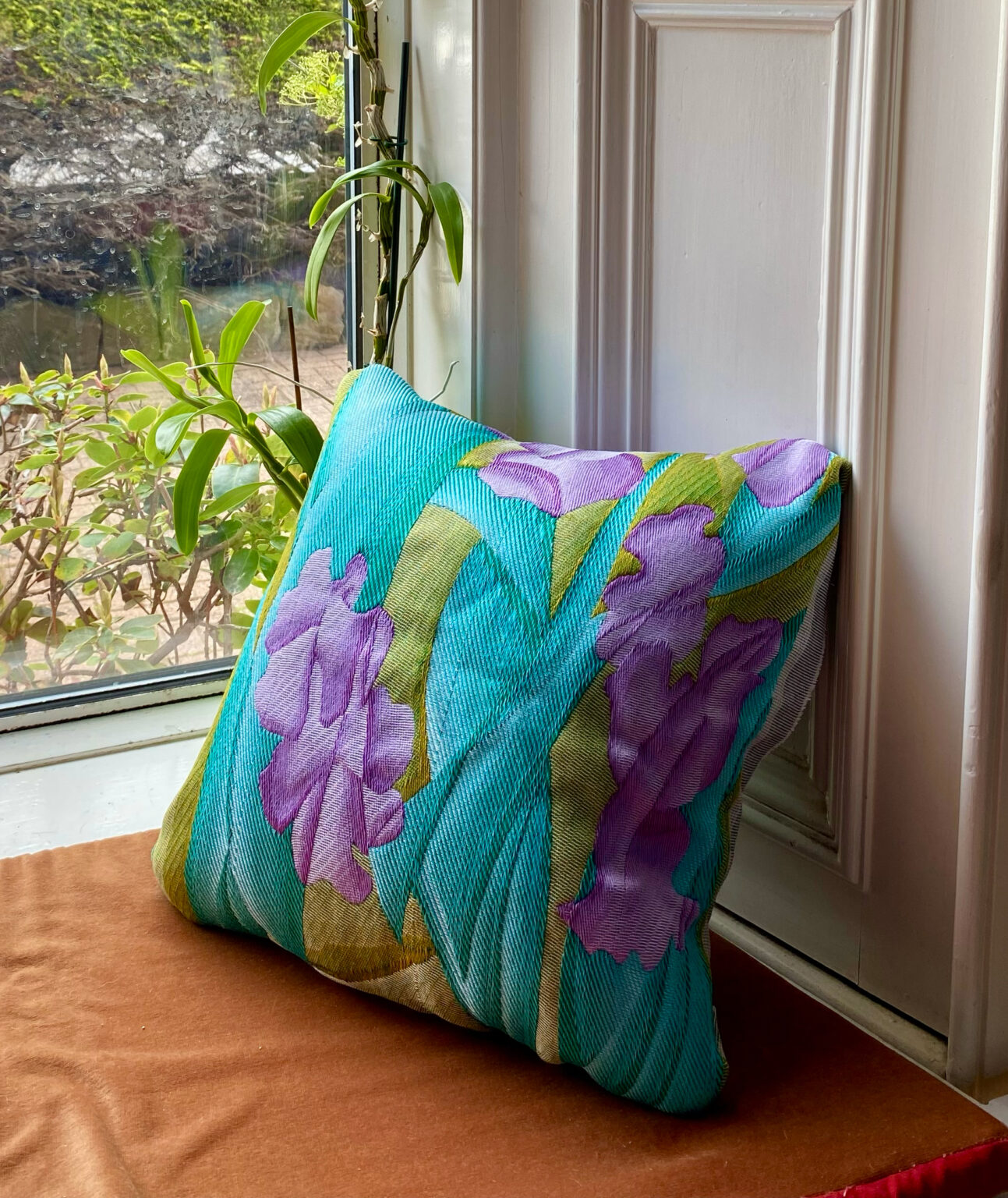School of Design Textile Design
Emily Stewart

Final year textile design student specialising in weave. My practice aims to bridge the gap between fine art and contemporary textile design, translating painterly depth and quality into woven surfaces, while exploring the power of colour, abstraction and perception. My textiles are produced on dobby and jacquard looms.
Contact

Through the Lens
This project aims to explore the intersection of traditional painting techniques, such as realism and cubism, with contemporary textile design, using the jacquard loom to translate complex visual forms into woven fabrics. By reinterpreting still life and botanical subjects through the fractured lens of Cubism, I seek to challenge conventional approaches to both painting and textile design, while investigating the power of colour, abstraction, and perception, unlocking new visual possibilities.
Cubism, with its fragmented representation of reality and multiple overlapping perspectives, provides an ideal framework to explore how ordinary objects can be perceived and reconstructed in dynamic ways. A key aim is to capture the delicate quality of my watercolour paintings, using shaded satin structures to create harmonious blends of yarn and capture gentle tonal transitions, achieving painterly depth in woven cloth. This approach allows me to realistically represent my subjects in woven fabric while simultaneously manipulating perspectives by presenting colliding viewpoints, producing compositional tapestry-like fabric intended for upholstery and interior environments.
Weaving with mercerised cottons, I take advantage of the yarn’s natural sheen to enhance the richness of colour and elevate the visual impact of my colour-driven designs. The style and palette choices are heavily influenced by the Scottish Colourists—particularly Samuel Peploe and Francis Cadell—whose approach continues to inform and inspire my creative process. This project ultimately seeks to bridge fine art and textile design by integrating painterly techniques into woven surfaces. Through this synthesis, I hope to push the boundaries of both disciplines, creating contemporary textiles that are rich in colour, abstraction, and compositional depth.
I developed an additional collection of floral repeat digital designs, inspired by my time spent in Tokyo on exchange.
Woven Transitions: From structure to surface
The core objective of my complementary project is to build on the technical and visual framework developed in my main jacquard-based work. Exploring shaded twills in greater depth, creating subtle gradients of mercerised cottons and silks on the dobby loom, focusing more on the surface pattern and decorative quality of the cloth, but maintaining a strong connection to the technical precision on my main project. This investigation reimagines those same techniques through the lens of dobby weaving, depicting the blend of yarns, experimenting with the scale and rotation of twills, creating ombre effects in bold, contrasting blocks. The resulting fabrics are designed for interior applications, including lightweight woven panels, room dividers, and curtains that soften natural light while maintaining a sense of privacy.

















































